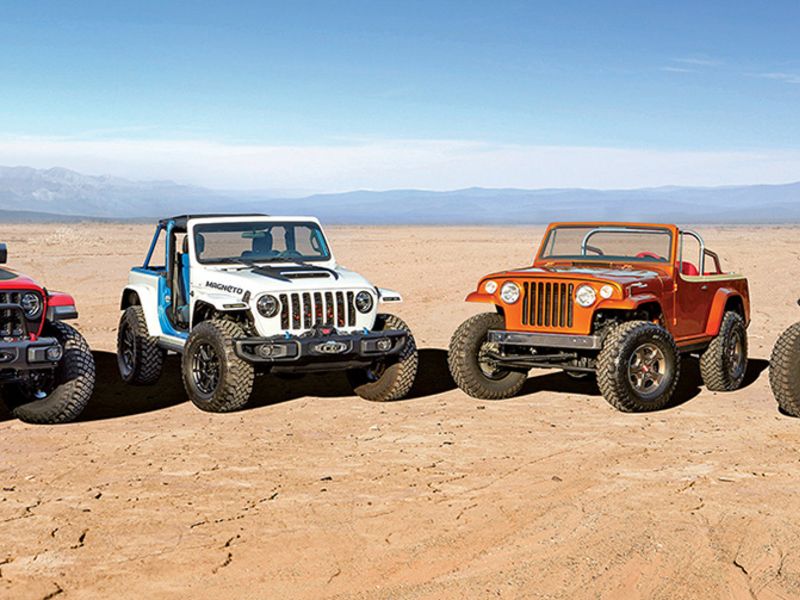
The landscape is changing for Jeep.
The venerable brand hasn’t faced serious off-road competition for the better part of a decade or more.
But with the Ford Bronco and Hummer — reimagined and electrified under the GMC brand — set for comebacks, Jeep is upping its game and green cred with new concepts.
Jeep has combined electrified power and the internal combustion engine with off-road prowess to engineer the set of custom-built Wrangler and Gladiator concepts.
The Easter Jeep Safari in Moab, Utah — running Saturday, March 27, to Sunday, April 4 — is the testing ground for the newest 4x4s, capped by the first battery-electric vehicle from Jeep — the Magneto — another milestone in Jeep’s quest to become the greenest SUV brand.
The Magneto, based on the two-door Wrangler Rubicon, is equipped with a custom-built axial flux electric motor that revs up to 6,000 rpm. The motor is connected to a six-speed manual transmission, creating a powertrain with a clutch that operates as it would with an internal combustion engine. Jeep says the compact motor delivers up to 273 pound-feet of torque and 285 hp. Calibrations permit the powertrain to emulate the driving experience, torque and horsepower of a V-6 engine. The Magneto concept runs 0 to 60 mph in 6.8 seconds, Jeep says.
The Red Bare concept is a Gladiator Rubicon equipped with a turbocharged 3.0-liter EcoDiesel V-6 engine, rated at 260 hp and 442 pound-feet of torque, with standard stop-start technology. To handle greater torque loads, the V-6 connects to a TorqueFlite 8HP75 eight-speed automatic transmission, calibrated for low rpm shifts and to maneuver over rigorous terrain. The Red Bare features a 91:1 crawl ratio to tackle tough trails.
The Jeepster Beach concept started as a 1968 Jeepster Commando and was blended with the performance of a 2020 Wrangler Rubicon. The Jeepster Commando, created around growing interest in leisure use of 4×4 vehicles, was the first compact four-wheel-drive vehicle with an automatic gearbox. But unlike the Jeep CJs of the time, it featured modern standard amenities: doors, roll-up side glass, a heater and a roof. The Jeepster Beach features a 2.0-liter turbocharged four-cylinder engine with a custom, concept calibration that increases output about 25 percent above the production version, to 340 hp and 369 pound-feet of torque. The interior features low-back bucket seats trimmed in red leather. The rear seat was replaced with a chrome four-point safety cage, and the carpets were removed to make cleaning out sand a cinch.
With the Orange Peelz, based on the two-door Wrangler, Jeep pays homage to unbridled open-air endeavors. Mopar designers enhanced the Wrangler’s open-air heritage by removing side and rear windows, installing prototype Jeep Performance Parts half-doors and a custom removable one-piece glass sunroof. The Orange Peelz is powered by a 3.6-liter Pentastar V-6 engine with 285 hp and 260 pound-feet of torque, buttoned to a TorqueFlite eight-speed automatic transmission. The powertrain is upgraded with a cold-air intake and cat-back exhaust system, both from the performance parts division.

